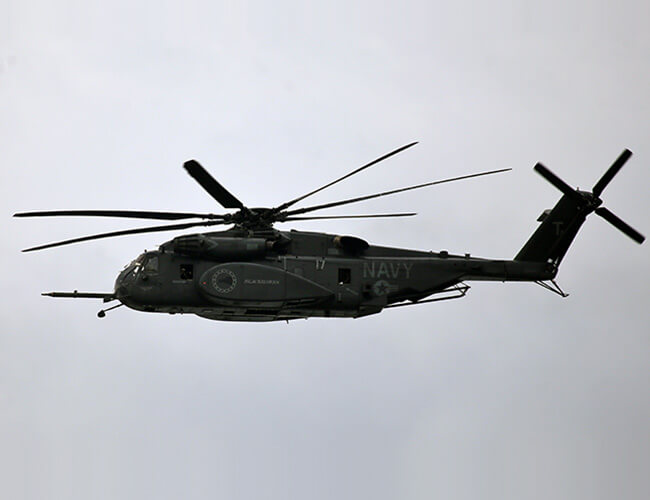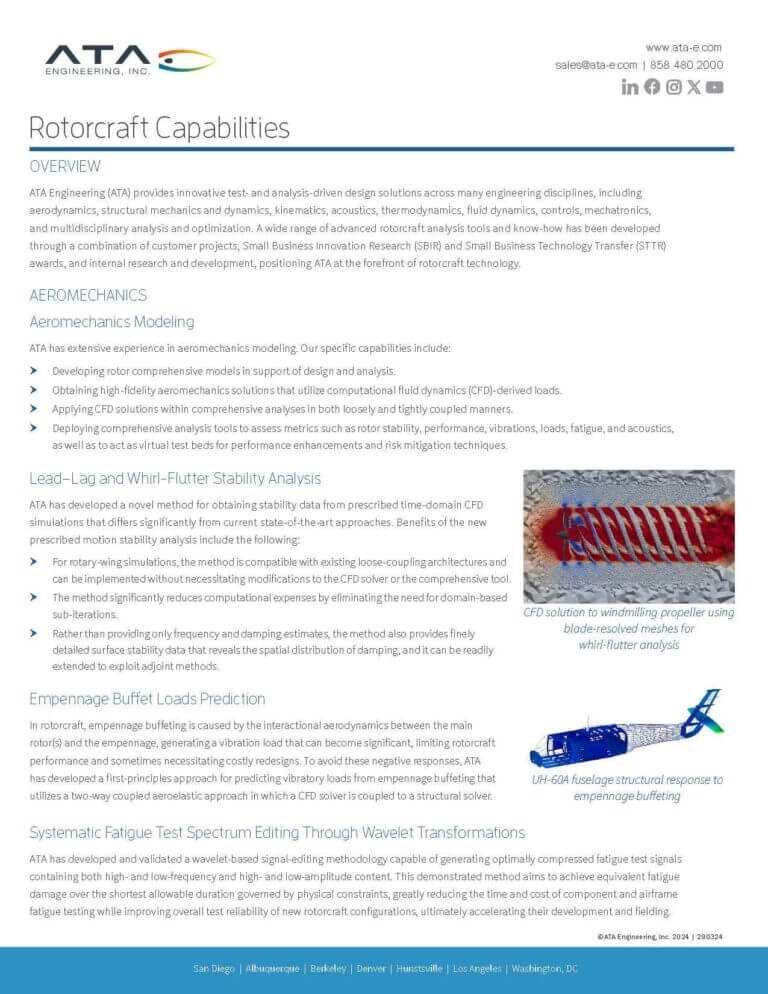ATA Engineering excels at bringing together experts in vertical flight to tackle core rotorcraft and eVTOL aeromechanics challenges. These multidisciplinary teams are successful in developing models at an appropriate fidelity that balances the need for reliable, high-quality results with practical engineering time and cost constraints.
To solve rotary-wing aeromechanics problems, ATA has developed a variety of tools and methods that can be extended or modified to accommodate specialized engineering applications. In addition to methods development, ATA has an extensive background with rotor comprehensive analysis and multibody dynamics tools, computational fluid dynamics (CFD), aeroelastic (commonly referred to as “CFD/CSD”) trim, structural dynamic solvers, finite element analysis (FEA) software, acoustics, fatigue, and aeroelastic stability.

ATA engineers also develop specialized software tools designed to aid rotary wing analyses. Hermes, a multidisciplinary coupling framework developed by ATA, links separately developed software tools to address intricate challenges encountered in the advancement of rotorcraft technology. Setting itself apart from competitors, ATA has also developed an advanced structural dynamics software tool called FuselageSolver™. FuselageSolver, which provides the time-domain response of linear structures via externally generated FEA data, offers numerous time integration schemes, output requests, and constraint types. It also has a plethora of options for coupling to external software, including a conservative projection-based mapping scheme. FuselageSolver and Hermes are both available to ATA customers and the rotorcraft community.
In addition to these comprehensive software tools, ATA has expertise in predicting performance, obtaining flight dynamic stability coefficients, and providing flutter and other dynamic aeroelastic stability predictions. ATA has the ability to examine vibrations caused by aerodynamic interactions as well as rotor/fuselage coupling. ATA engineers are also responsible for the development of the indirect eigenvalue method, which makes it possible for analysts to efficiently obtain eigenvalue predictions at a level of fidelity that would otherwise be computationally infeasible (e.g., from coupled FEA/CFD analysis). ATA engineers continue to pioneer innovation, spearheading advancements in vertical flight to ensure the success of our customers.

Connect with us to discuss how our advanced multi-disciplinary team can help you achieve your engineering goals.




